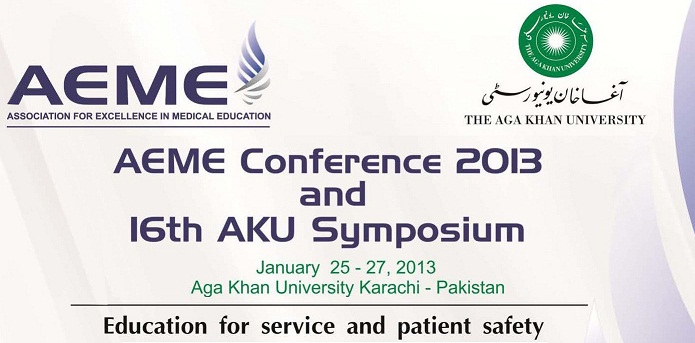Day 1 : Oral Presentations (Theme: Patient Safety)
Adverse events monitoring: A step towards making AKUH a safe place for patients
Location
Lecture Hall 2
Start Date
26-1-2013 11:25 AM
Abstract
Background: Medical harm and errors are almost inevitable outcomes of failures in processes of care. Therefore by focusing on the adverse events experienced by patients, a hospital can foster a culture of safety that aims at reducing them. . AKUH since years has quantified adverse events using conventional voluntary incident reporting. Research has concluded that only 10-20% of total errors in the hospital are ever reported. Thus one such initiative has been taken by The Aga Khan University Hospital, Karachi, from January 2011. IHI’s (Institute of Healthcare Improvement) global trigger tools (GTT) is utilized to calculate hospital’s harm rate. The purpose of using IHI’s GTT was to identify number of adverse events in hospital, categorize them according to severity of harm, establish strategies to reduce harm rate and compare with our own trends to improve it over time.
Methods: A cross-sectional retrospective review was done from January to December 2011 using standard IHI’s GTT trigger tools. Random sample of 20 closed medical records per month were reviewed and audited by a patient safety nurse first then a clinician, against ‘56’ triggers mentioned GTT tool. Patients who were shifted to high dependency area during the hospital stay were selected.
Results: Total 240 records reviewed in the year 2011 in which 66 (27.5%) patients experienced an adverse event with an average of 1.45 AE per patient; totaling the AEs to 96 in 66 patients. About 64 (66.6%) AEs contributed to temporary harm to patient requiring intervention (Category E), while 22 (22.9%) required prolong hospitalization (Category F), 04 (4%) lead to permanent harm (Category G), about 05 (5.2%) required intervention to sustain life (Category H) and 01 (1%) led to patient’s death (Category I). On the basis of these results, improvement plan were developed by respective multidisciplinary team with the goal to improve patient safety.
Conclusions: These results suggest that adverse events are definitive source of harm to the patient. Using GTT has aided to identify those events which were not voluntarily reported. Hence the hospital plans to continue using this promising tool to identify AEs proactively.
Adverse events monitoring: A step towards making AKUH a safe place for patients
Lecture Hall 2
Background: Medical harm and errors are almost inevitable outcomes of failures in processes of care. Therefore by focusing on the adverse events experienced by patients, a hospital can foster a culture of safety that aims at reducing them. . AKUH since years has quantified adverse events using conventional voluntary incident reporting. Research has concluded that only 10-20% of total errors in the hospital are ever reported. Thus one such initiative has been taken by The Aga Khan University Hospital, Karachi, from January 2011. IHI’s (Institute of Healthcare Improvement) global trigger tools (GTT) is utilized to calculate hospital’s harm rate. The purpose of using IHI’s GTT was to identify number of adverse events in hospital, categorize them according to severity of harm, establish strategies to reduce harm rate and compare with our own trends to improve it over time.
Methods: A cross-sectional retrospective review was done from January to December 2011 using standard IHI’s GTT trigger tools. Random sample of 20 closed medical records per month were reviewed and audited by a patient safety nurse first then a clinician, against ‘56’ triggers mentioned GTT tool. Patients who were shifted to high dependency area during the hospital stay were selected.
Results: Total 240 records reviewed in the year 2011 in which 66 (27.5%) patients experienced an adverse event with an average of 1.45 AE per patient; totaling the AEs to 96 in 66 patients. About 64 (66.6%) AEs contributed to temporary harm to patient requiring intervention (Category E), while 22 (22.9%) required prolong hospitalization (Category F), 04 (4%) lead to permanent harm (Category G), about 05 (5.2%) required intervention to sustain life (Category H) and 01 (1%) led to patient’s death (Category I). On the basis of these results, improvement plan were developed by respective multidisciplinary team with the goal to improve patient safety.
Conclusions: These results suggest that adverse events are definitive source of harm to the patient. Using GTT has aided to identify those events which were not voluntarily reported. Hence the hospital plans to continue using this promising tool to identify AEs proactively.

